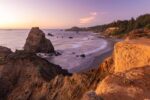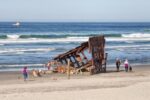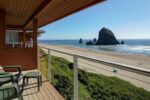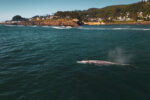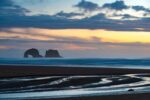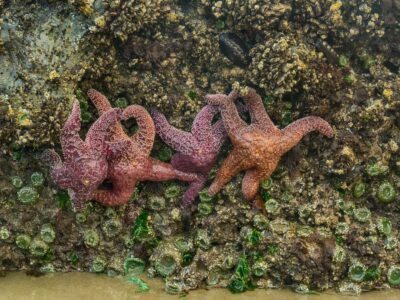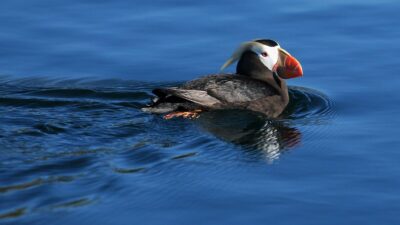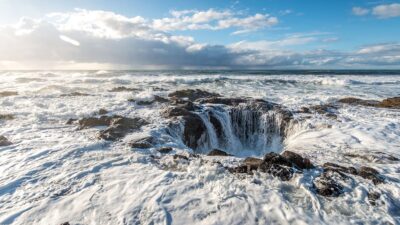Updated: February 20, 2024
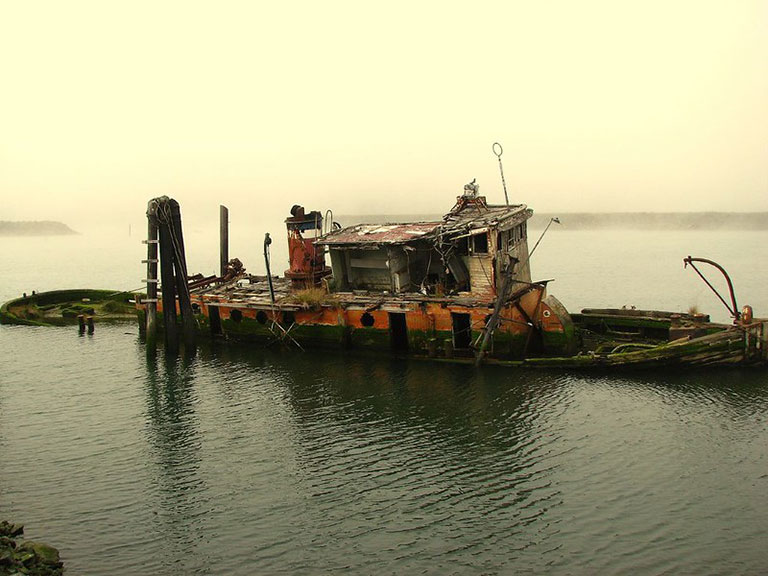
While there are many stories of shipwrecks on the Oregon Coast, there are only a handful of places where you can still see the actual remains of the ships. Some sit invisible, buried under years of sand until a winter storm or king tide hits and reveals parts of the ship’s remaining skeleton.
Here are a few of the best spots to see shipwrecks in Oregon that still offer a glimpse of these ships that once sailed the seas.
Mary D. Hume, Gold Beach
Though it did not technically wreck, the Mary D. Hume (pictured above) has certainly seen better days. The ship was a whaling vessel and tugboat built in 1881 that served as an active sea vessel for 97 years.
In 1985, while they were making an effort to preserve the ship as a museum, an accident caused it to slip off a sling and into the mud where she still sits today.
The boat is partially submerged near the shoreline just west of the Patterson bridge in Gold Beach, Oregon on the south side of the Rogue River. Visit at low tide for the best views.
Peter Iredale, Hammond

One of the most famous shipwrecks on the Oregon Coast, the wreck of the Peter Iredale in Fort Stevens State Park is still partially visible on the beach near Astoria, Oregon where it ran aground in 1906.
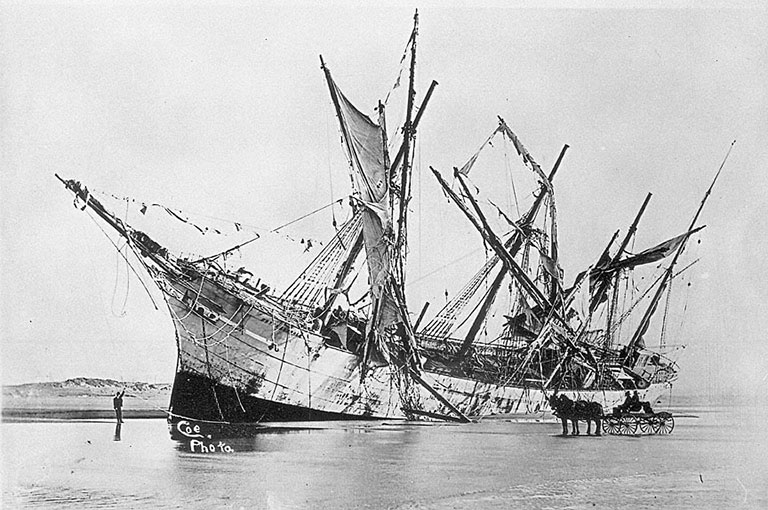
The Iredale was a 4-masted steel ship that set sail from Salina Cruz, Mexico en route to Portland, Oregon. The ship made it all the way to the Columbia River bar only to be hit by a strong wind that drove it into the beach at Clatsop Spit, snapping 3 of its masts.
All 27 crewmembers, including 2 stowaways, were rescued and no one was injured, but the boat could not be saved. The captain offered a final toast to his ship: “May God bless you, and may your bones bleach in the sands.”
Learn more about shipwrecks on the Oregon Coast and the “Graveyard of the Pacific” at the Columbia River Maritime Museum in Astoria.
Further Reading
J. Marhoffer, Boiler Bay
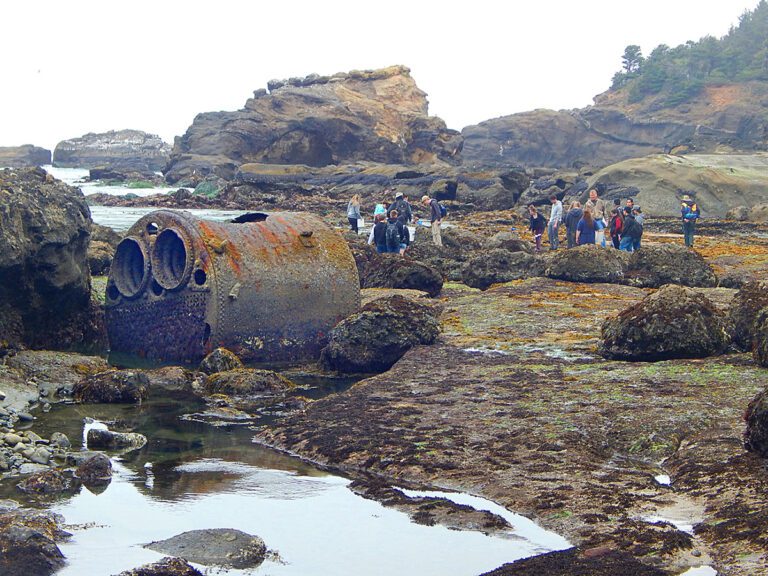
In 1910, a steamship called the J. Marhoffer accidentally caught on fire while an engineer was struggling to light a blowtorch in the oil-soaked engine room. The flames spread so quickly, the crew had to abandon ship.
The crewless, burning ship continued barreling northward at full speed, crashing into the rocks and exploding near Depoe Bay, Oregon. A witness said, “She came charging in belching flames, sparks and smoke like a volcano.”
The ship’s big, rusty boiler still sits where it landed 100 years ago and during extreme low tides, some have ventured out to it.
The site, formerly known as Briggs Landing, was renamed Boiler Bay after the shipwreck. Boiler Bay State Scenic Viewpoint is also a great place to pull over, take in the views and spot whales and seabirds.
Emily G. Reed, Rockaway Beach
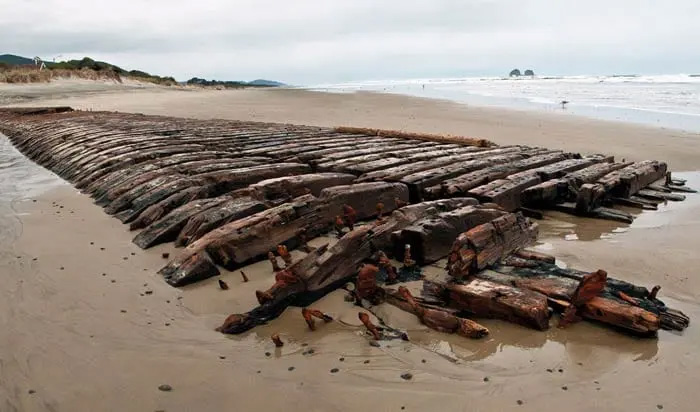
On the beach in front of the Silver Sands Hotel in Rockaway Beach, Oregon, the shipwreck of the Emily G. Reed sits buried in the sand. It’s not always visible, but sometimes harsh winter storms reveal the last wooden remnants of the wreckage.
The 209-ft long schooner set sail in 1907 from New South Wales, Australia, on its way to Bristol Bay, Alaska loaded with coal. After 102 days out at sea, she reached the Oregon coast in February 1908.
In the dense, early morning fog and rain, the ship ran aground when the captain accidentally took a wrong turn. While he thought he was 60 miles from the shore, shortly after he turned, the boat crashed into the beach at high tide, breaking the whole bow off.
Eight crewmembers died while trying to escape on lifeboats, while the captain, his wife and remaining crew survived by waiting to swim ashore at low tide.
You May Also Like:
- The Best Lighthouses on the Oregon Coast
- More Oregon Coast Activities and Attractions

